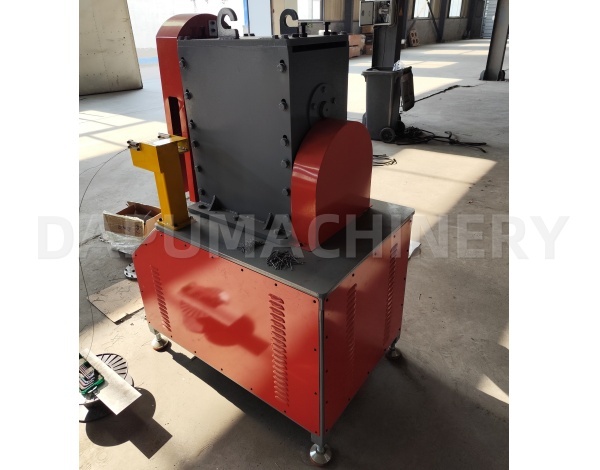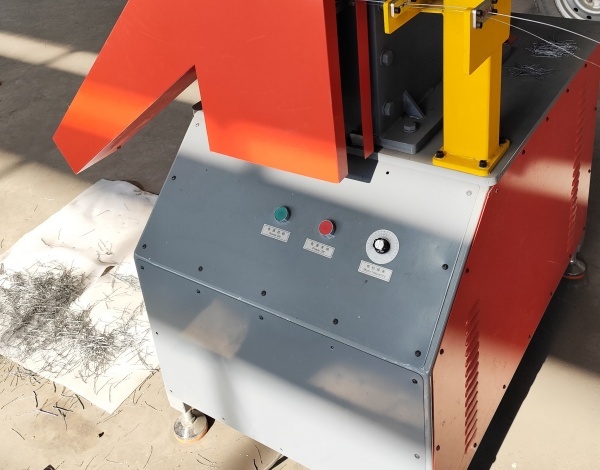
How to Choose the Right Steel Fiber Machine for Hooked, Corrugated, or Straight Fibers
Category:News
Author:
Source:
Add time:2025-04-25 11:32
Steel fibers are revolutionizing construction and industrial applications by enhancing the durability and strength of concrete. However, not all fibers are created equal—hooked, corrugated (wave-type), and straight fibers serve distinct purposes. Choosing the right steel fiber machine depends on understanding your project requirements, regional challenges, and the machine’s capabilities. For businesses in emerging markets like South America, the Middle East, Southeast Asia, and Africa, this decision is even more critical due to factors like material availability, power reliability, and environmental conditions.


In this guide, we’ll break down how to select the ideal steel fiber machine for your needs, using the DAPU Steel Fiber Machine DP-2000 as a benchmark for versatility and efficiency.
Step 1: Define Your Fiber Type and Application
The type of fiber you produce directly impacts the machine specifications. Here’s a quick overview:
Hooked-End Fibers:
Use Case: Ideal for high-stress applications like tunnel linings, mining shafts, or earthquake-resistant structures. The hook improves bonding with concrete.
Regional Demand: Popular in South America (mountainous regions) and the Middle East (megacity infrastructure).
Corrugated (Wave-Type) Fibers:
Use Case: Enhances crack resistance in industrial flooring, bridges, and coastal projects. The wavy design distributes stress evenly.
Regional Demand: Critical in humid climates (Southeast Asia, West Africa) where corrosion and cracking are common.
Straight Fibers:
Use Case: Cost-effective solution for general-purpose concrete reinforcement, such as pavements or prefabricated elements.
Regional Demand: Widely used in budget-conscious markets like rural Africa or small-scale Southeast Asian workshops.
Key Takeaway:
If your projects vary (e.g., producing both hooked fibers for tunnels and corrugated fibers for flooring), prioritize a multi-shape machine like the DAPU DP-2000, which supports all three fiber types without requiring reconfiguration.
Step 2: Evaluate Raw Material Compatibility
Emerging markets often face limited access to specialized materials. For instance:
Africa: Relies heavily on low-cost iron wire.
Middle East: Prefers galvanized steel for desert and coastal projects.
Southeast Asia: Uses stainless steel in humid, corrosive environments.
A machine must handle diverse materials. The DAPU DP-2000, for example, processes stainless steel, galvanized wire, iron wire, and recycled materials (0.3–1mm diameter). This flexibility lets you adapt to local supply chains—crucial in regions where importing premium wires is expensive or impractical.
Avoid Machines That:
Only work with specific wire types (e.g., machines limited to stainless steel).
Require frequent recalibration for material switches.
Step 3: Prioritize Energy Efficiency and Power Stability
In regions with unstable electricity (e.g., rural Africa or Southeast Asia), high-power machines can lead to downtime or inflated generator costs. Consider:
Motor Power: The DAPU DP-2000 uses a 3kW motor, consuming 50% less energy than competitors with 5–7kW motors.
Solar Compatibility: Some machines (e.g., EcoFiber E2) support solar power—useful in off-grid areas but may lack versatility.
Rule of Thumb:
For hooked/corrugated fibers (thicker wires): Ensure the machine balances power and efficiency.
For straight fibers (thinner wires): Opt for low-energy models to reduce costs.
Step 4: Assess Maintenance and Durability
Harsh conditions—dusty mines, tropical humidity, or extreme heat—demand rugged, low-maintenance equipment.
DAPU DP-2000’s Advantages:
Heavy-Duty Frame: 1200kg steel construction withstands rough handling.
Simple Mechanics: Fewer electronic parts mean less risk of failure in dusty environments (e.g., Middle Eastern deserts).
Easy Repairs: Modular design allows quick part replacements—critical in areas with limited technical support.
Machines to Avoid in Emerging Markets:
Overly complex systems (e.g., GlobalTech G5) requiring specialized technicians.
Lightweight models prone to vibration damage during high-speed production.
Step 5: Match Productivity to Your Market’s Needs
A machine’s output must align with local demand:
High Volume (7+ tons/day): Suitable for Middle Eastern megaprojects but risks overinvestment in smaller markets.
Adjustable Output (2–7 tons/day): The DAPU DP-2000’s variable speed suits both small workshops (e.g., Vietnam) and mid-sized factories (e.g., Nigeria).
Case Study:
A construction company in Peru uses the DP-2000 to produce hooked fibers for mining tunnels (5 tons/day) but scales down to 2 tons/day for straight fibers during off-seasons. This adaptability prevents idle machinery.
Step 6: Consider Space and Portability
Cramped urban factories (e.g., Jakarta) or remote sites (e.g., African villages) need compact, mobile machines.
DAPU DP-2000’s Edge:
Footprint: 1×0.72×1.5m—fits in tight spaces.
Weight: 1200kg with optional wheels for relocation.
Avoid:
Bulky machines (e.g., TurboSteel X3) requiring fixed installations.
Step 7: Calculate Long-Term Costs
Emerging markets prioritize ROI. Factor in:
Energy Costs: A 3kW machine saves $1,000+ annually vs. a 7kW model in high-tariff regions.
Downtime Losses: Robust machines like the DP-2000 minimize breakdown-related delays.
Training Expenses: User-friendly controls reduce training time for new operators.
Why DAPU DP-2000 Works for All Fiber Types
Shape Versatility: Switch between hooked, corrugated, or straight fibers by adjusting blade settings—no hardware changes needed.
Material Flexibility: Process everything from recycled iron wire (common in Africa) to corrosion-resistant stainless steel (for Southeast Asia).
Scalability: Adjust output from 2 to 7 tons/day to match project timelines.
Survival-Proof Design: Built to operate in 45°C heat (Middle East) or 90% humidity (Indonesia).
Competitor Comparison
| Machine | Best For | Hooked Fiber | Corrugated Fiber | Straight Fiber | Emerging Market Fit? |
|---|---|---|---|---|---|
| DAPU DP-2000 | Multi-shape projects | Yes | Yes | Yes | Excellent |
| TurboSteel X3 | High-speed output | Yes | No | Yes | Poor (high energy use) |
| EcoFiber E2 | Off-grid production | No | No | Yes (thin wires) | Limited |
| GlobalTech G5 | Custom shapes | Yes (premium) | Yes (premium) | Yes (premium) | No (complex maintenance) |
Conclusion
Choosing the right steel fiber machine boils down to three questions:
What fiber types does my market need?
Can the machine handle local materials and conditions?
Will it deliver ROI without excessive downtime or costs?
For hooked, corrugated, or straight fiber production in challenging environments, the DAPU DP-2000 emerges as the most reliable choice. Its combination of flexibility, durability, and efficiency addresses the core pain points of emerging markets, outperforming niche or over-engineered alternatives.
Whether you’re reinforcing a highway in Kenya, a port in Thailand, or a skyscraper in Saudi Arabia, investing in the right machine ensures you stay competitive—today and in the years ahead.
Recommend News




